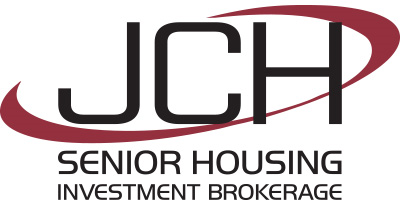Looking Forward to 2022 in the Senior Housing Sector
To look forward to 2022, one must look back to the unprecedented disruption to the world’s economy caused by COVID-19, in 2020 and 2021. As we all know, the senior housing sector was hit hard by this pandemic, causing significant loss of residents, and staff, as well as unprecedented financial difficulties. Fortunately, the federal government stepped up and provided much needed financial assistance which kept many facilities afloat. According to NIC Map Data Service, Third Quarter occupancy rose in both Senior Housing and Skilled Nursing, which is great news for the industry. As we move into 2022 there remains some uncertainty caused by concerns related to new strains of the virus.
Divided into three major market segments: Active Adult, unlicensed facilities such as Independent Living (IL), and licensed facilities which would be Skilled Nursing Facilities (SNF) and Assisted Living Facilities (AL) each are facing unique challenges. In this article we will focus on licensed facilities.
Skilled Nursing Facilities, care for the most “High acuity/high-risk” individuals. While they are experiencing census gains, they are struggling to not only find, but also maintain quality care staff. Significant upward wage pressures, coupled with staff resistance to vaccine mandates, is the major factor contributor to this. Skilled Nursing facilities are still in high demand for most senior housing sector investors.
Assisted Living Facilities, which include Memory Care, serve seniors that require assistance with the activities of daily living. Operators are facing increased expenses including higher staff wages, insurance costs in some instances rising as much as 40%, and higher food costs, which all effect the bottom line.
Although not licensed, Independent Living/Active Adult communities which serve the younger/healthier population are also seeing census growth.
Having recently attending the NIC conference in Houston, the attendee’s pulse was that of optimism for the sector. While census is rebounding across the country, many smaller owner/operators are still struggling.
Most conversations centered around the difficulty in attracting qualified staff and increased expenses which are having a negative effect on NOI. Perhaps the silver lining is that valuation metrics such as CAP rates, per unit and cost per bed are holding steady. Lenders, while active in the market, continue to be rather conservative in their underwriting and if the property is still in the process of recovering, the balance sheet of the buyer is of extreme importance.
We are encouraging investors who are considering the sector to pay close attention to every aspect of the transaction. During the due diligence period, investors need to really evaluate what capital investments are going to be needed especially, what CAPEX the property will need. They also must evaluate what potential residents are looking for in a facility and what ways they can optimize employee retention. The good news is that transaction activity is picking up significantly in all sectors of the senior housing industry and we expect it to continue as we move into 2022.
Senior Housing is need-driven with strong demographic growth. The factors that make the industry one of the most desirable investments, never really left. Overall, the Senior Housing sector is returning to normal, if at a slower pace than what was expected.
Cindy Hazzard is the Broker and President of JCH Senior Housing Investment Brokerage. She has 25 years of experience in the seniors housing investment industry.
